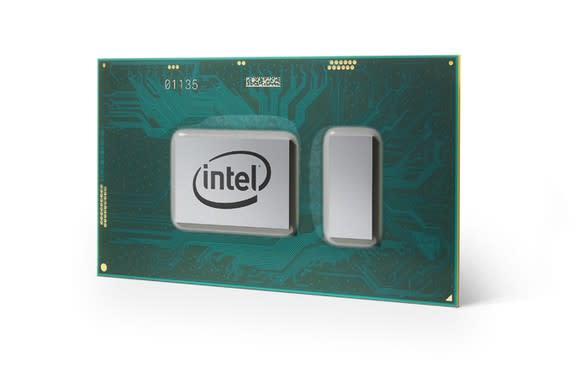Intel Adds $15 Billion to Buyback Program
Chip giant Intel (NASDAQ: INTC) has spent a considerable amount of money repurchasing its own stock year to date, laying out nearly $8.5 billion to do so. However, in the company's most recent quarterly filing, it noted that as of Sept. 29, 2018, it only had $4.7 billion left on its current repurchase authorization.
On Nov. 15, the organization issued a press release stating that its board of directors "has approved a $15.0 billion increase in [Intel's] authorized stock repurchase program."

Image source: Intel.
"The company had $4.7 billion remaining under its existing repurchase authorization as of Sept. 29, 2018," Intel said.
This means Intel's total buyback authorization -- assuming it didn't utilize any of the $4.7 billion it had left as of Sept. 29 -- is now good for $19.7 billion.
Let's take a closer look at what this means for investors.
Intel's not promising that it will buy back stock, but ...
In the announcement, Intel was open about the fact that it has no obligation to purchase shares, "but may choose to do so in the open market or through private transactions at times and amounts determined by the company based on its evaluation of market conditions and other factors."
In other words, while Intel has the capacity to repurchase nearly $20 billion worth of stock, it's not indicating anything about the potential timing of repurchases -- or if it will even undertake them at all.
With that being said, as Intel pointed out in the press release, "[from] 1990 through the third quarter of 2018, Intel has returned approximately $177 billion to stockholders through dividends and stock repurchases."
What's $19.7 billion good for, anyway?
It's important to look at the size of a company's share repurchase authorization relative to its total market capitalization. If the authorization makes up a significant portion of the company's market capitalization, there's a chance a buyback program can significantly reduce share count, leading to a meaningful boost in earnings per share.
As of this writing, Intel commands a market capitalization of around $223.6 billion. Its current $19.7 billion share repurchase authorization is good for around 8.8% of the company's total shares outstanding.
Keep in mind that Intel isn't likely to buy back all of those shares in one gulp if it does so at all: Purchases would happen gradually. On top of that, over time, Intel's share count (excluding buybacks) is naturally set to rise thanks to share-based compensation, so a portion of that $19.7 billion -- again, if it's used -- will simply make up for that dilution.
Even so, this is far from a token repurchase authorization, and it ultimately has the potential to shrink Intel's share count over time.
Next up, a dividend increase
Intel's capital-return program consists of both share repurchases as well as a quarterly dividend. The next thing investors should be keeping an eye on, then, is a dividend increase from the chipmaker.
Intel CFO (and, currently, interim CEO) Bob Swan said back in February of 2017 that with respect to the dividend, "[our] intentions are to grow our dividend in line with non-GAAP earnings growth. Our desires are to keep that around 40% of our free cash flows."
Intel is set to enjoy robust free cash flow growth in 2018. The company's most recent guidance calls for free cash flow of $15.5 billion for the year, up from about $10.33 billion in 2017, according to The Wall Street Journal. So, investors should anticipate at a healthy dividend increase for calendar 2019.
More From The Motley Fool
Ashraf Eassa has no position in any of the stocks mentioned. The Motley Fool has no position in any of the stocks mentioned. The Motley Fool has a disclosure policy.
